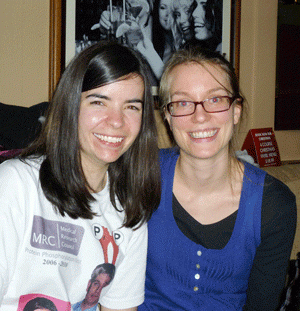
Possible role of mTOR Protor subunits in regulating SGK activation uncovered
A few years ago at the beginning of her PhD Laura Pearce identified novel components of the mTOR complex 2 (mTORC2) that she termed Protor-1 and Protor-2. Laura found that Protor isoforms interacted with the mTORC2 component Rictor. Protor-1 and Protor-2 possess significant similarity and are encoded by different genes. Unfortunately, Protor-isoforms do not possess any obvious domains or motifs that yield clues about their physiological roles.
As the role of these subunits was unclear Laura decided to generate knockout mice lacking Protor-1 and/or Protor-2. Laura found that the single and double knockout mice were viable and displayed no obvious phenotype. She also found that loss of Protor-1 and/or Protor-2 did not affect the expression of the other mTORC2 components, nor their ability to assemble into an active complex capable of phosphorylating the hydrophobic motif of Akt (Ser473). Laura next found that Protor knockout mice displayed no defects in the phosphorylation of Akt and PKCÃ_± at their hydrophobic or turn motifs.
Just as Laura was giving up hope of finding a phenotype, she observed that Protor-1 knockout mice displayed markedly reduced phosphorylation of SGK1 at its hydrophobic motif a residue that is directly phosphorylated by mTORC2. Moreover, the physiological substrate of SGK1, NDRG1 was also much less phosphorylated in the kidney of Protor deficient mice, indicative of reduced SGK1 activity in these animals. The kidney is the only tissue of the mouse in which it was possible to observe significant basal SGK1 activity and NDRG1 phosphorylation.
This work was greatly aided by Eeva Sommer who helped identify antibody reagents capable of detecting endogenous SGK1 and measuring phosphorylation of the hydrophobic and T-loop residues of SGK1. Eeva also undertook all of the additional experiments that were requested by the Reviewers as Laura had already departed to start her postdoc in Sadaf Farooqi's laboratory in Cambridge.
These new data suggest that Protor-1 may play a role in enabling mTORC2 to efficiently activate SGK1, at least in the kidney. A key question for future work is what is the mechanism by which Protor isoforms enhance phosphorylation of SGK1 in the kidney? Do Protor subunits act as scaffolding components to aide mTORC2 activating SGK1? Is the dependency of SGK1 activation on Protor subunits specific to kidney tissues?
To read a copy of Laura's and Eeva's paper click here
As the role of these subunits was unclear Laura decided to generate knockout mice lacking Protor-1 and/or Protor-2. Laura found that the single and double knockout mice were viable and displayed no obvious phenotype. She also found that loss of Protor-1 and/or Protor-2 did not affect the expression of the other mTORC2 components, nor their ability to assemble into an active complex capable of phosphorylating the hydrophobic motif of Akt (Ser473). Laura next found that Protor knockout mice displayed no defects in the phosphorylation of Akt and PKCÃ_± at their hydrophobic or turn motifs.
Just as Laura was giving up hope of finding a phenotype, she observed that Protor-1 knockout mice displayed markedly reduced phosphorylation of SGK1 at its hydrophobic motif a residue that is directly phosphorylated by mTORC2. Moreover, the physiological substrate of SGK1, NDRG1 was also much less phosphorylated in the kidney of Protor deficient mice, indicative of reduced SGK1 activity in these animals. The kidney is the only tissue of the mouse in which it was possible to observe significant basal SGK1 activity and NDRG1 phosphorylation.
This work was greatly aided by Eeva Sommer who helped identify antibody reagents capable of detecting endogenous SGK1 and measuring phosphorylation of the hydrophobic and T-loop residues of SGK1. Eeva also undertook all of the additional experiments that were requested by the Reviewers as Laura had already departed to start her postdoc in Sadaf Farooqi's laboratory in Cambridge.
These new data suggest that Protor-1 may play a role in enabling mTORC2 to efficiently activate SGK1, at least in the kidney. A key question for future work is what is the mechanism by which Protor isoforms enhance phosphorylation of SGK1 in the kidney? Do Protor subunits act as scaffolding components to aide mTORC2 activating SGK1? Is the dependency of SGK1 activation on Protor subunits specific to kidney tissues?
To read a copy of Laura's and Eeva's paper click here

